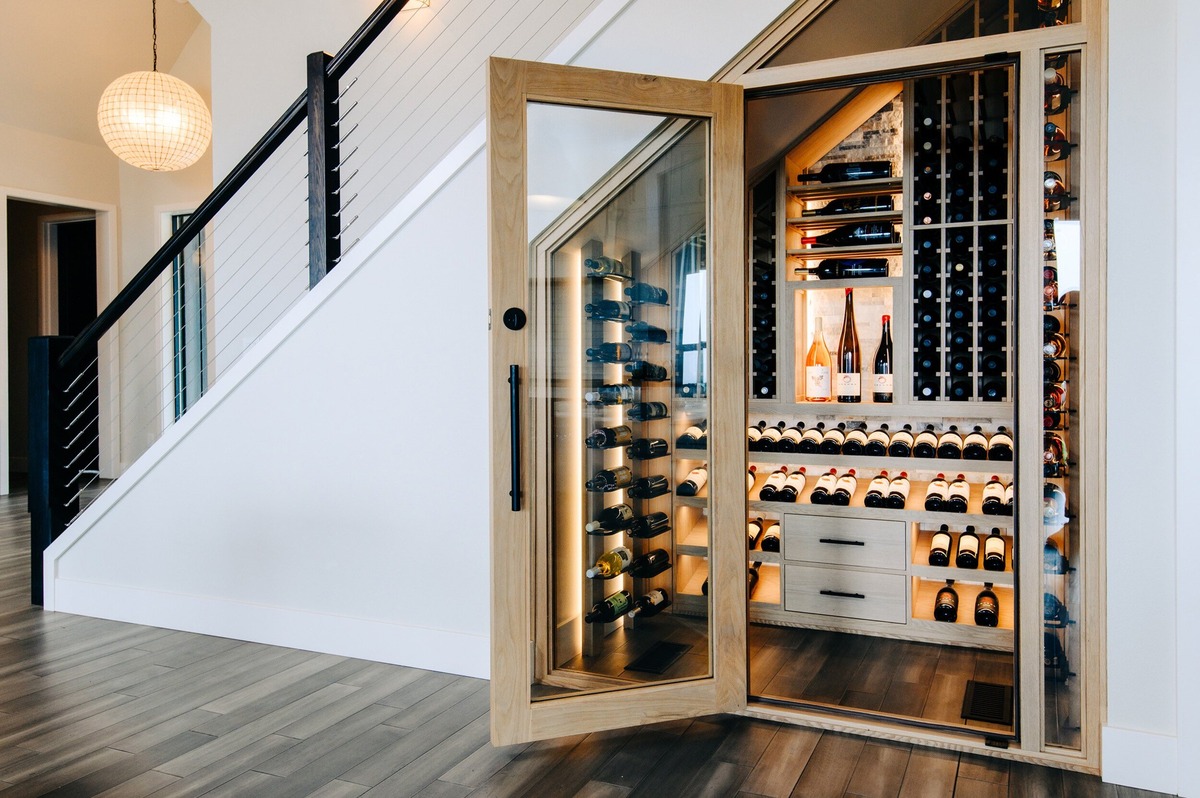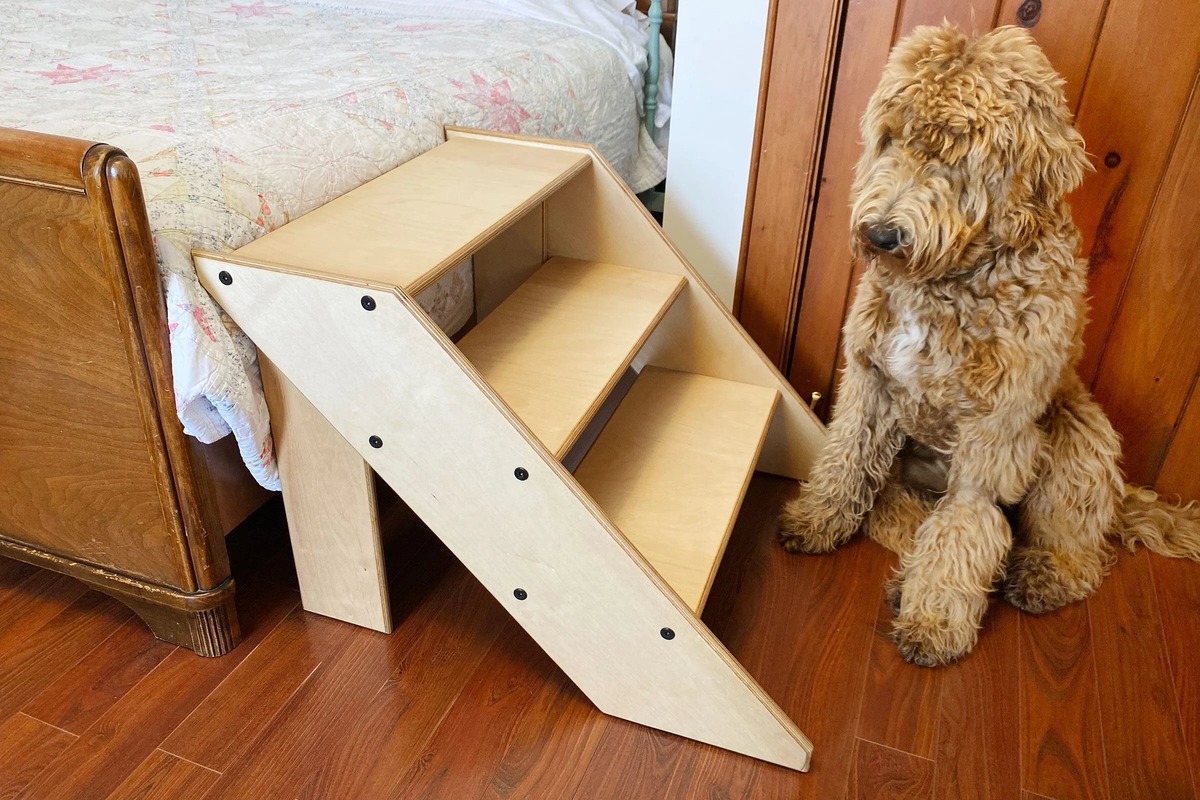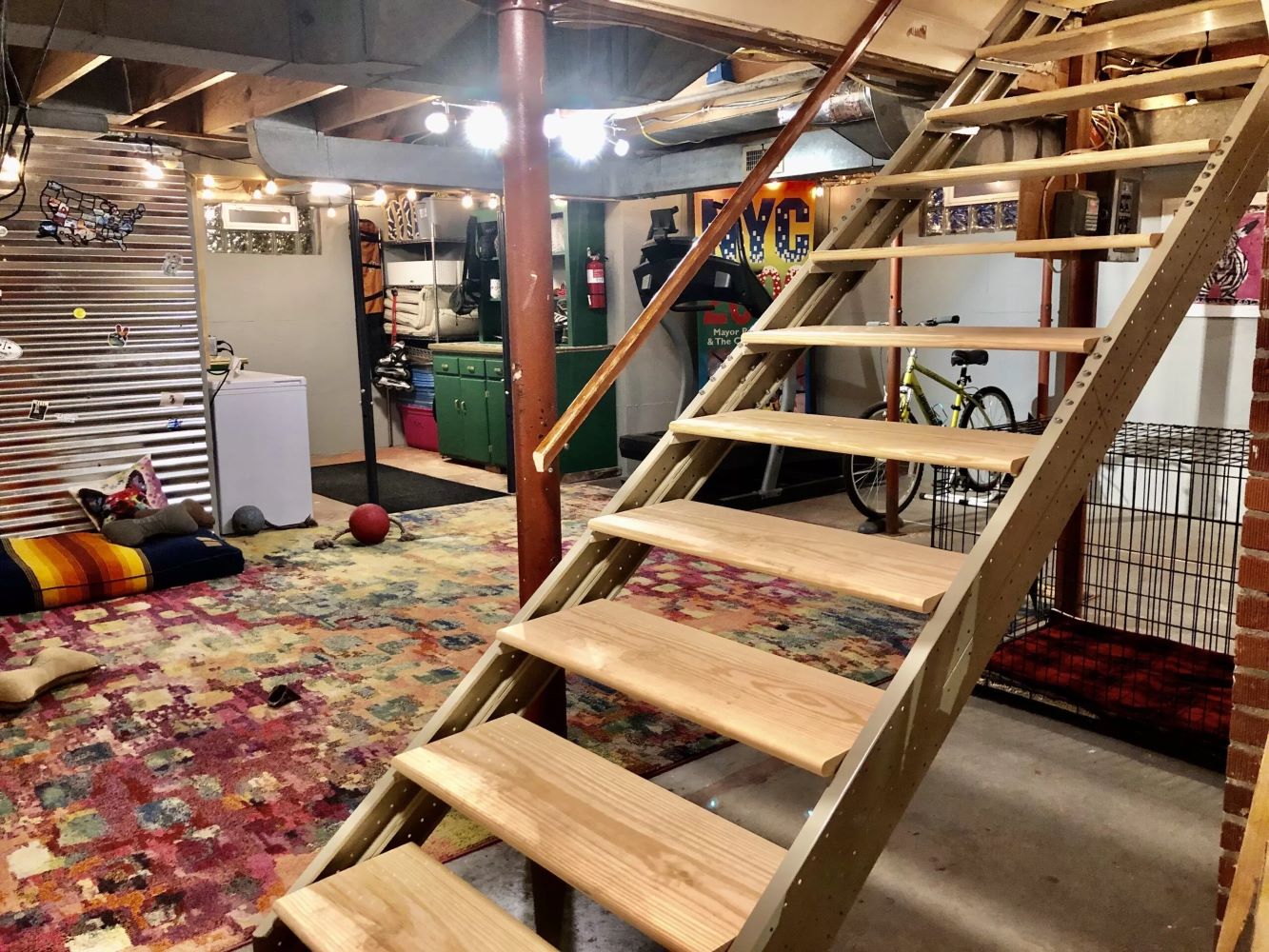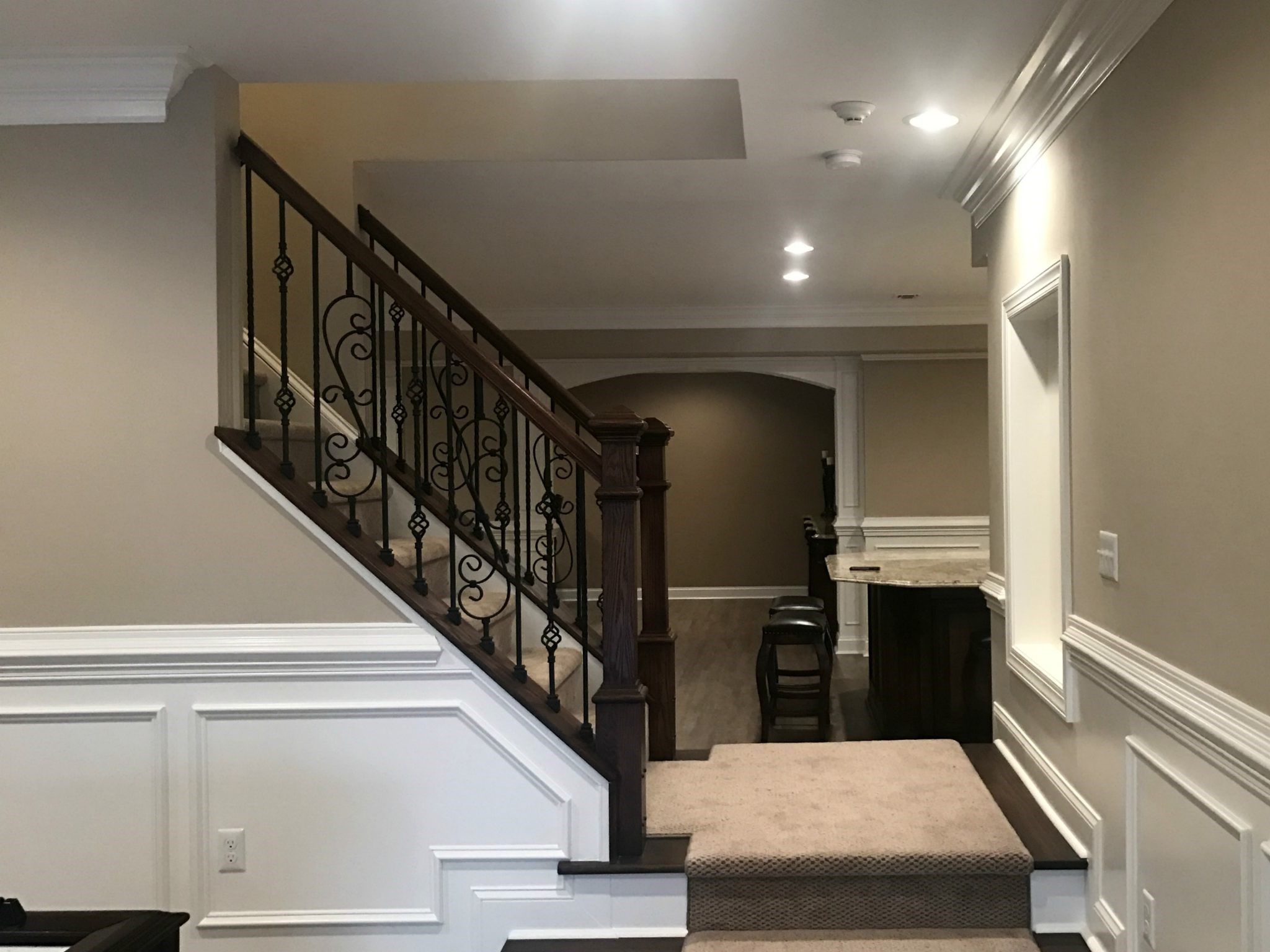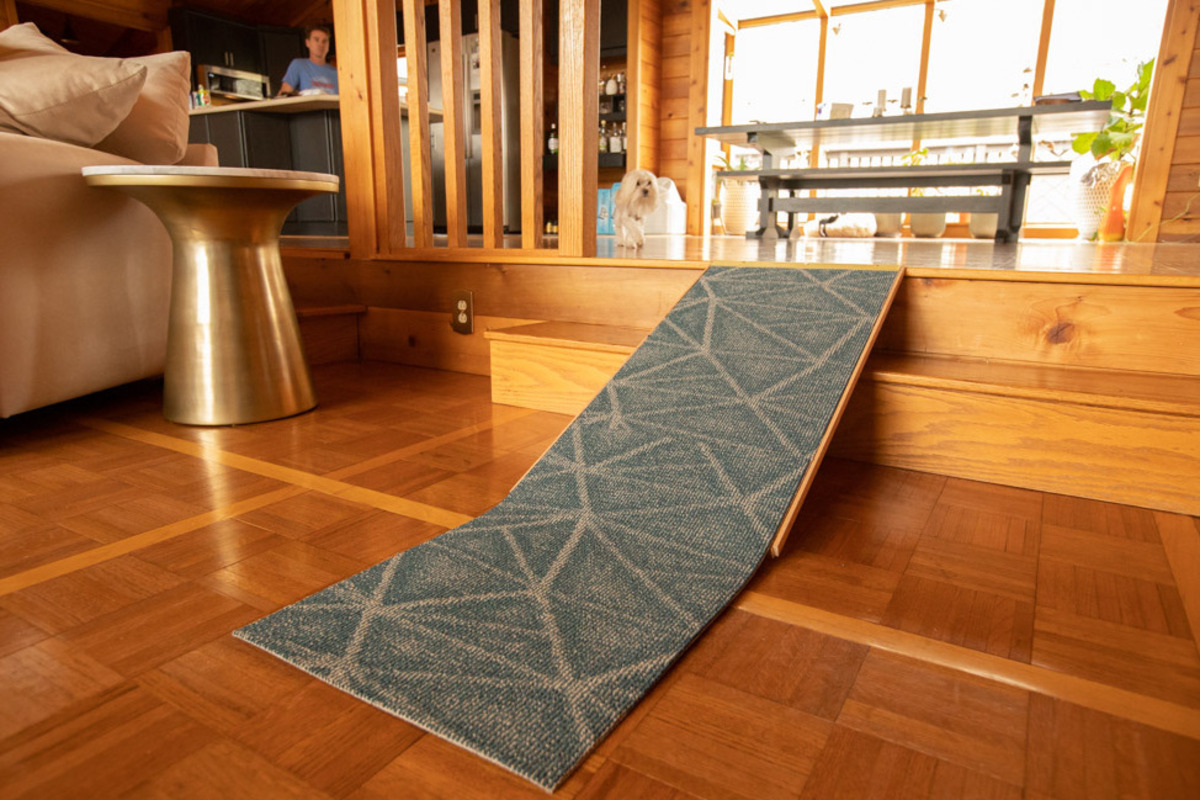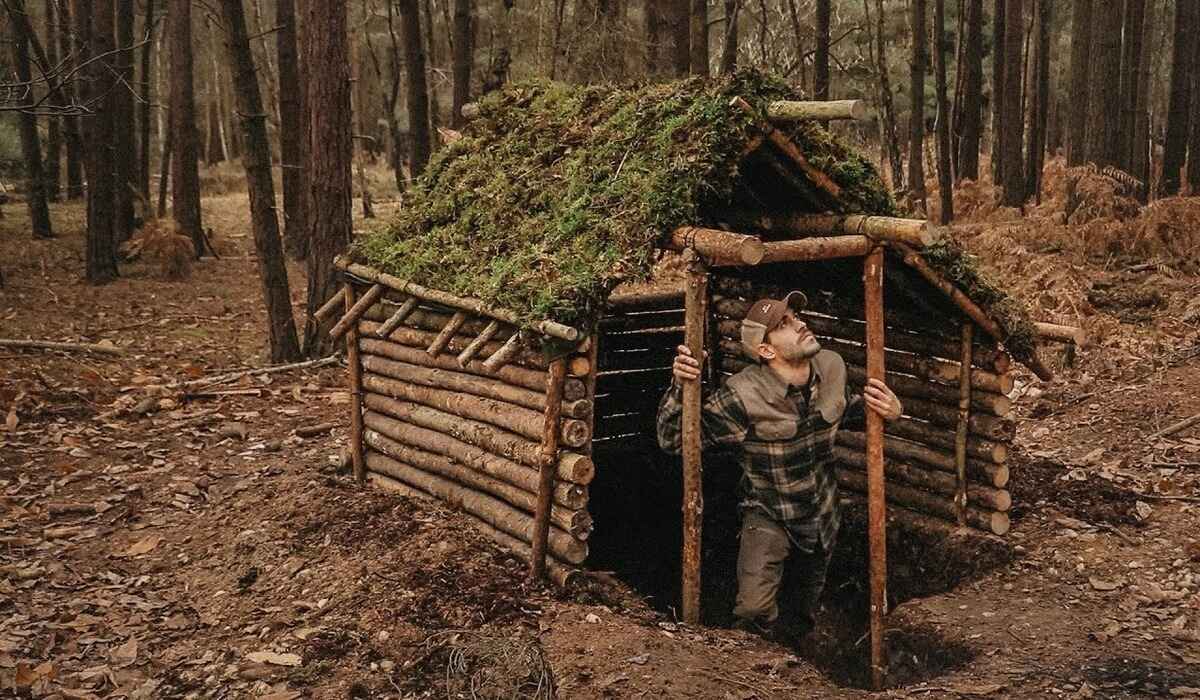Home>Create & Decorate>DIY & Crafts>How To Build Stairs
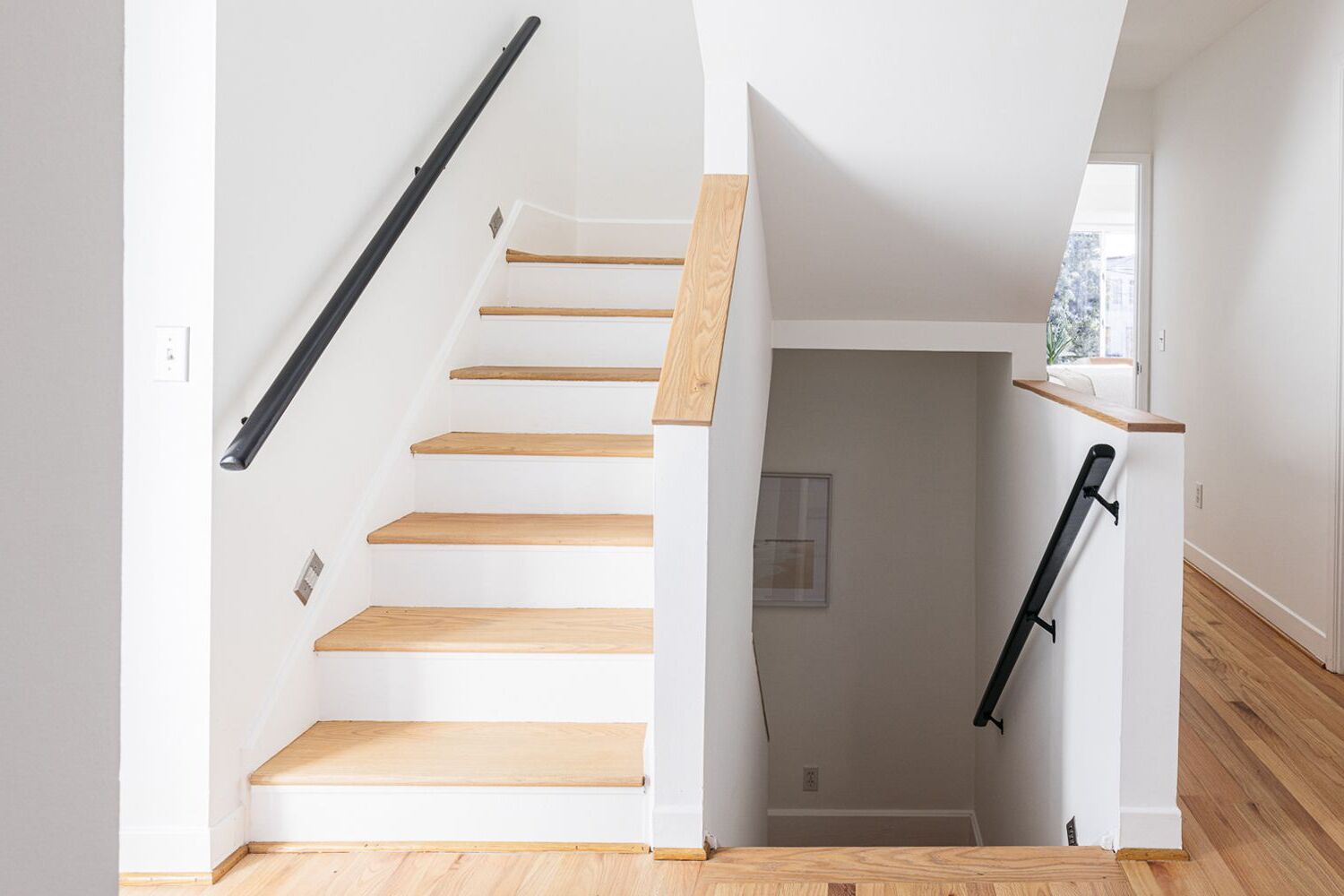

DIY & Crafts
How To Build Stairs
Published: February 23, 2024

Senior Editor in Create & Decorate, Kathryn combines traditional craftsmanship with contemporary trends. Her background in textile design and commitment to sustainable crafts inspire both content and community.
Learn how to build stairs with our easy DIY & Crafts guide. Get step-by-step instructions and tips for creating safe and stylish stairs at home.
(Many of the links in this article redirect to a specific reviewed product. Your purchase of these products through affiliate links helps to generate commission for Twigandthistle.com, at no extra cost. Learn more)
Introduction
Building a set of stairs can be a rewarding and practical DIY project that adds both functionality and aesthetic appeal to your home. Whether you're constructing interior stairs to connect different levels of your house or outdoor stairs to access a deck or patio, the process requires careful planning, precise measurements, and the right materials. By following a step-by-step approach and paying attention to crucial details, you can create a sturdy and visually appealing staircase that enhances the overall design of your living space.
When embarking on a stair-building project, it's essential to consider the specific requirements and constraints of the location where the stairs will be installed. Factors such as the available space, the intended purpose of the stairs, and the architectural style of the surrounding area all play a significant role in determining the design and construction of the staircase. Additionally, safety considerations must be prioritized to ensure that the stairs meet building codes and provide a secure means of vertical circulation.
Throughout this comprehensive guide, you will learn the fundamental steps involved in building stairs, from initial planning and measurement to the selection of suitable materials and the construction of the staircase frame. You will also discover the essential techniques for installing treads and risers, as well as adding finishing touches to complete the project with finesse. By following these instructions and incorporating your creativity, you can transform a basic structural element into a standout feature that complements your home's architecture and reflects your personal style.
As you delve into the process of building stairs, keep in mind that attention to detail and precision are paramount. Each phase of the project contributes to the overall strength, stability, and visual appeal of the staircase. With the right approach and a willingness to tackle this challenging yet rewarding endeavor, you can successfully create a set of stairs that not only serves its functional purpose but also becomes a striking focal point within your home. So, roll up your sleeves, gather your tools, and let's begin the journey of crafting a custom staircase that embodies both form and function.
Read more: How To Build Deck Stairs
Planning and Preparation
Before diving into the physical construction of the stairs, meticulous planning and thorough preparation are essential to ensure a smooth and successful building process. This phase sets the foundation for the entire project, encompassing crucial considerations such as design, safety, and compliance with building codes.
Design Considerations
The first step in planning a staircase involves determining its location and purpose. Whether you're creating interior stairs to connect different levels of your home or outdoor stairs to access a deck or patio, the design should harmonize with the existing architectural style and spatial layout. Consider factors such as the available space, traffic flow, and aesthetic preferences to guide the design process.
Safety and Building Codes
Prioritizing safety is non-negotiable when planning a staircase. Familiarize yourself with local building codes and regulations to ensure that the design and construction comply with safety standards. Key aspects to address include the minimum and maximum riser and tread dimensions, handrail specifications, and headroom clearance. Adhering to these guidelines is crucial for creating a safe and functional staircase.
Material Selection
Carefully select the materials for the stairs, taking into account factors such as durability, aesthetics, and maintenance requirements. Common options include wood, metal, and composite materials, each offering unique characteristics that can influence the overall look and feel of the staircase. Consider the visual cohesion with the surrounding space and the level of foot traffic when choosing the most suitable materials.
Read more: How To Build Outdoor Stairs
Budget and Timeline
Establishing a realistic budget and timeline is integral to the planning phase. Factor in the cost of materials, tools, and any professional assistance that may be required. Additionally, create a detailed timeline that outlines each phase of the project, allowing for flexibility and accounting for potential delays. A well-defined budget and timeline provide a clear roadmap for the construction process, minimizing unexpected setbacks.
Obtaining Permits
Depending on the scope of the project and local regulations, obtaining permits may be necessary before commencing the construction of the stairs. Research the specific permit requirements in your area and ensure that all necessary approvals are obtained before proceeding with the project. This proactive approach helps prevent potential legal issues and ensures compliance with building regulations.
Site Preparation
Prepare the site where the stairs will be installed by clearing any obstructions and ensuring a level and stable foundation. This may involve removing existing structures, clearing debris, and assessing the terrain to create a suitable base for the staircase. Adequate site preparation is essential for laying the groundwork for a structurally sound and visually appealing staircase.
By meticulously addressing these planning and preparation considerations, you can lay a solid foundation for the successful construction of your custom staircase. This phase sets the stage for the subsequent steps, guiding the project toward a well-executed and visually striking end result.
Measuring and Calculating
Accurate measurements and precise calculations form the backbone of a well-constructed staircase. Before cutting any materials or beginning the assembly process, it is imperative to meticulously measure the designated area and calculate the dimensions of each stair component. This phase demands attention to detail and a methodical approach to ensure that the stairs fit seamlessly into the intended space and adhere to safety standards.
Read more: How To Build Deck Stairs With A Landing
Assessing the Space
Start by carefully assessing the space where the stairs will be installed. Measure the height from the finished floor to the top of the landing or upper floor, as well as the total horizontal distance available for the staircase. These measurements serve as the foundation for determining the number of treads and risers required, as well as the overall dimensions of the staircase.
Determining Rise and Run
The rise, which refers to the vertical distance between each step, and the run, which denotes the horizontal depth of each step, are critical factors in staircase design. Calculate the rise and run dimensions based on the total height and horizontal distance, ensuring that the resulting measurements comply with building codes and safety standards. Consistency in the rise and run dimensions is essential for achieving a comfortable and safe stairway.
Counting Treads and Risers
Based on the calculated rise and run dimensions, determine the number of treads and risers needed for the staircase. Divide the total height by the desired rise to ascertain the number of risers, while considering the thickness of the treads. Additionally, account for the nosing overhang and any landings or platforms within the staircase design.
Accounting for Headroom and Clearance
Incorporate headroom and clearance requirements into the measurements to ensure that the staircase provides adequate space for safe and unobstructed passage. Verify that the headroom above the stairs meets building code specifications, allowing individuals to ascend and descend without encountering any overhead obstacles.
Read more: How To Build Stair Stringers
Verifying Accuracy
Double-check all measurements and calculations to verify their accuracy before proceeding to the construction phase. Even minor discrepancies can significantly impact the structural integrity and safety of the staircase. Taking the time to confirm the measurements minimizes the likelihood of errors and ensures a precise fit during the assembly process.
By meticulously measuring and calculating the dimensions of the staircase, you establish the groundwork for a well-fitted and secure structure. This meticulous approach sets the stage for the subsequent phases of material selection, frame construction, and installation, guiding the project toward a successful and visually appealing outcome.
Choosing Materials
Selecting the appropriate materials for building stairs is a pivotal decision that significantly influences the structural integrity, visual appeal, and long-term durability of the staircase. The chosen materials should align with the overall design aesthetic, complement the surrounding space, and withstand the expected level of foot traffic. By carefully considering the unique characteristics of various materials, you can make an informed choice that enhances both the functionality and aesthetics of the staircase.
Wood
Wood is a popular choice for constructing stairs due to its natural warmth, versatility, and timeless appeal. Hardwoods such as oak, maple, and cherry are renowned for their strength and durability, making them ideal for high-traffic areas. Softwoods like pine and hemlock offer a more budget-friendly option while still providing a classic look. When selecting wood for stairs, consider the grain pattern, color variation, and finish options to achieve the desired visual impact.
Metal
Metal stair components, including steel, iron, and aluminum, offer a modern and industrial aesthetic that can complement contemporary or minimalist design schemes. Metal is prized for its strength and resilience, making it suitable for both interior and exterior staircases. Additionally, metal can be combined with other materials such as wood or glass to create striking visual contrasts and unique design elements.
Read more: How To Build A Loft Bed With Stairs
Glass
For a sleek and sophisticated look, incorporating glass elements into the staircase design can impart a sense of openness and modernity. Tempered glass panels or balusters provide a transparent barrier while allowing natural light to permeate the space, creating an airy and visually striking effect. When using glass in stair construction, safety considerations and proper installation are paramount to ensure structural stability and user safety.
Composite Materials
Composite materials, such as engineered wood products and synthetic decking materials, offer a blend of durability, low maintenance, and design versatility. These materials are resistant to warping, rot, and insect damage, making them well-suited for outdoor staircases exposed to the elements. Additionally, composite materials often feature a range of color options and textures, allowing for customized design possibilities.
Considerations for Treads and Risers
When selecting materials for treads and risers, prioritize slip resistance, ease of maintenance, and visual cohesion with the surrounding space. For outdoor stairs, materials with enhanced weather resistance, such as pressure-treated wood or composite decking, are recommended to ensure longevity and safety. Indoors, hardwood treads and risers offer a timeless and elegant appearance, while carpeting provides comfort and sound absorption.
By thoughtfully evaluating the characteristics and suitability of different materials, you can make an informed decision that aligns with your design vision, budget, and performance expectations. The chosen materials will play a pivotal role in shaping the overall look and feel of the staircase, contributing to its functionality and visual impact for years to come.
Building the Frame
The construction of the frame forms the structural backbone of the staircase, providing stability, support, and a framework for the subsequent installation of treads and risers. This phase demands precision, attention to detail, and adherence to the predetermined measurements and calculations. By following a systematic approach and utilizing the selected materials, you can create a robust and well-aligned frame that serves as the foundation for a secure and visually appealing staircase.
Read more: How To Build 2 Step Stairs
Assembling the Stringers
The stringers, also known as the main structural supports of the staircase, play a pivotal role in determining the overall stability and load-bearing capacity of the stairs. Whether utilizing prefabricated stringers or constructing them from scratch, it is essential to ensure that they are accurately positioned and securely fastened. Carefully align the stringers with the predetermined rise and run dimensions, verifying their levelness and alignment to guarantee a uniform and secure foundation for the steps.
Installing the Treads and Risers
With the stringers in place, proceed to install the treads and risers to form the steps of the staircase. Whether opting for a traditional closed-riser design or an open-riser configuration, ensure that each tread and riser is securely attached to the stringers, providing a stable and level surface for safe passage. Pay close attention to the alignment and spacing of the treads and risers, verifying their uniformity and structural integrity to create a cohesive and secure stairway.
Reinforcing the Structure
To enhance the overall strength and stability of the frame, consider reinforcing key connection points and joints using appropriate fasteners and construction adhesives. This additional reinforcement minimizes the risk of structural shifting or loosening over time, ensuring that the staircase maintains its integrity and safety. Additionally, inspect the entire frame for any potential gaps, unevenness, or structural inconsistencies, addressing them promptly to achieve a solid and reliable framework.
Incorporating Design Elements
While prioritizing structural integrity, seize the opportunity to incorporate design elements that enhance the visual appeal of the staircase. Whether adding decorative trim, handrail supports, or embellishments to the stringers, these details contribute to the overall aesthetic impact of the staircase. Balancing functionality with design, these elements infuse character and style into the frame, elevating the visual appeal of the entire structure.
By meticulously executing the construction of the frame, you establish a sturdy and well-aligned foundation for the staircase, setting the stage for the subsequent phases of installation and finishing touches. This pivotal phase forms the structural core of the staircase, laying the groundwork for a secure, visually appealing, and enduring architectural feature within your home.
Read more: How To Build A Ramp Over Stairs
Installing the Treads and Risers
Installing the treads and risers is a critical phase in the construction of a staircase, as it directly impacts the safety, functionality, and visual appeal of the structure. This process involves attaching the horizontal treads, which provide a surface for stepping, and the vertical risers, which enclose the open space between the treads. By meticulously executing the installation of treads and risers, you can create a secure and visually cohesive staircase that enhances the overall design of your living space.
Begin the installation process by carefully positioning the treads and risers within the staircase frame, ensuring precise alignment and uniform spacing. Whether utilizing pre-cut components or custom-cut materials, meticulous attention to detail is essential to achieve a level and secure fit. Verify that each tread and riser is securely attached to the stringers, utilizing appropriate fasteners and construction adhesives to ensure a stable and durable connection.
When installing the treads, prioritize consistency in the depth and overhang to create a uniform and comfortable stepping surface. Whether opting for a traditional closed-riser design or an open-riser configuration, ensure that the treads are securely anchored to the stringers, providing a stable and level surface for safe passage. Additionally, consider incorporating a slight nosing overhang to enhance the visual appeal and user comfort, while adhering to safety guidelines regarding tread dimensions and overhang.
As for the risers, ensure that they are precisely positioned and securely fastened to enclose the open space beneath each tread. This not only contributes to the structural integrity of the staircase but also enhances the overall safety by preventing potential tripping hazards. Whether opting for a closed-riser design for a seamless appearance or an open-riser configuration for a modern aesthetic, verify that the risers are uniformly aligned and securely affixed to the stringers.
Throughout the installation process, meticulous attention to detail is paramount to ensure that each tread and riser is securely attached, level, and aligned with the predetermined measurements. Regularly verify the uniformity and structural integrity of the steps, addressing any discrepancies or irregularities promptly to achieve a cohesive and secure stairway.
By meticulously executing the installation of treads and risers, you establish a stable and visually appealing staircase that provides safe and comfortable vertical circulation within your home. This phase sets the stage for the subsequent finishing touches, guiding the project toward a successful and enduring architectural feature.
Finishing Touches
The finishing touches phase marks the culmination of the staircase construction process, where meticulous attention to detail and thoughtful embellishments elevate the overall aesthetic appeal and functionality of the structure. This pivotal phase encompasses a range of essential tasks and design elements that add character, refinement, and visual cohesion to the completed staircase, transforming it into a standout feature within your home.
One of the key aspects of the finishing touches involves the application of a protective finish or sealant to the staircase components. Whether working with wood, metal, or composite materials, applying a high-quality finish serves to enhance the durability, resistance to wear, and visual allure of the stairs. For wooden stairs, consider options such as varnish, polyurethane, or wood stain to accentuate the natural grain and color while providing a protective barrier against daily use and environmental factors. Metal components can benefit from powder coating or specialized finishes that offer corrosion resistance and a polished appearance. Additionally, composite materials may require specific sealants or coatings to maintain their integrity and aesthetic appeal over time.
Incorporating handrails and balustrades is another crucial aspect of the finishing touches, contributing to both safety and design cohesiveness. Whether opting for sleek metal railings, classic wooden balustrades, or modern glass panels, the choice of handrail materials and designs can significantly impact the overall visual impact of the staircase. Ensure that the handrails are securely installed and comply with safety regulations, providing a stable and ergonomic grip for ascending and descending the stairs. Balustrades, whether ornate or minimalist, add a decorative element while serving as a protective barrier, enhancing the overall aesthetic and safety of the staircase.
Lighting plays a pivotal role in accentuating the visual appeal and safety of the staircase. Strategically placed lighting fixtures, such as wall sconces, recessed lights, or integrated step lighting, not only illuminate the steps but also create a welcoming ambiance and highlight architectural details. Consider the placement and intensity of the lighting to ensure optimal visibility and a captivating visual effect, enhancing the overall allure of the staircase as a focal point within your home.
Embracing decorative elements such as trim moldings, accentuating the stringers, or incorporating custom details further enhances the visual impact of the staircase. These embellishments add a personalized touch, infusing character and style into the structure while harmonizing with the overall design aesthetic of the surrounding space.
By meticulously attending to these finishing touches, you elevate the staircase from a functional element to a visually striking and enduring architectural feature. Each detail contributes to the overall cohesiveness, safety, and aesthetic allure of the staircase, reflecting your attention to craftsmanship and design excellence.

